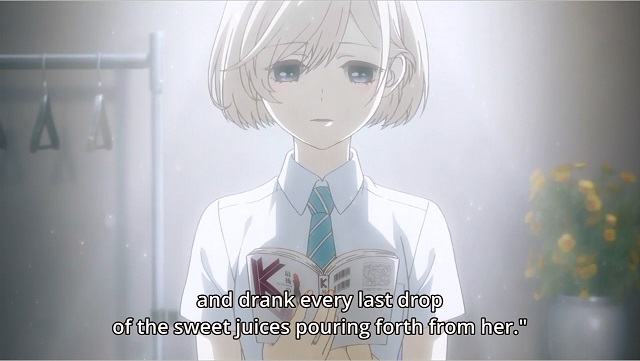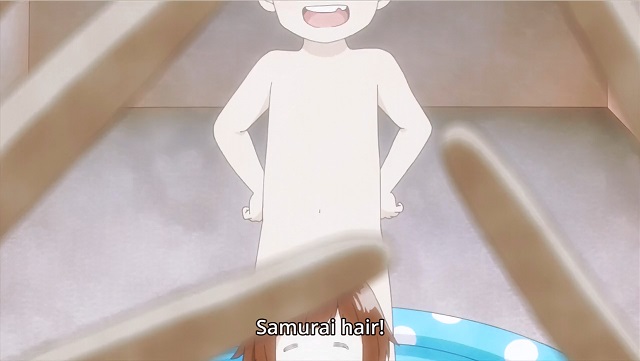If you haven’t done so yet, go watch the first episode of Araburu Kisetsu no Otome-domo yo so you can appreciate the clip below in its full glory:
Sex in anime usually is done on the same level as a raunchy eighties comedy, utterly incapable of any thought beyond “boobs are awesome”. Cheap tittelation and fan service is everywhere but it’s frustratingly rare for anime to move beyond that. I didn’t have high hopes for Araburu Kisetsu no Otome-domo yo because its MAL description made it sound like just another ecchi comedy. Which it is, but what I didn’t realise it was one written by Okada Mari. She always delivers something interestingly and it’s the same here. This series has the most honest depiction of puberty, sex and the attraction to it and fear of it I’ve ever seen in anime.

Not series start by having one of the main characters narrate a description of eating out a girl, to the mixed reception of her fellow Literature club members. While Sonezaki the club president is revulsed by it, the narrating girl herself, beautiful and melancholy Sugawara wants to experience sex for herself. Of the other three members, the stoic Hongō is writing eroica herself and sees all this as reserve, while the main protagonist Onodera and her shy friend Sudō are both fascinated and embarassed by it. Onodera may or may not have a crush on her childhood friend, who has grown up to be a popular football player at their high school, with his fan girls giving Onodera a hard time for even talking to him.

She herself though keeps seeing the dorky boy she grew up with, still fascinated by trains and thinks he’s just grown bigger, hasn’t changed. She just cannot see him in a sexual light. That is, until one night she goes over to bring some leftovers her mother had made for him and runs into him, well not watching videos of trains anymore… Childhood friend discovers her crush’s hidden porn stash is an anime cliche of long standing, but I can’t think of any series in which she walked in on him having a wank. And he’s actually watching online porn, meaning anime finally caught up with the late nineties. His response, her response, the music playing through it and her final denial on the railroad bridge with the train going underneath between her legs: it’s all perfect.
This is my anime of the season.